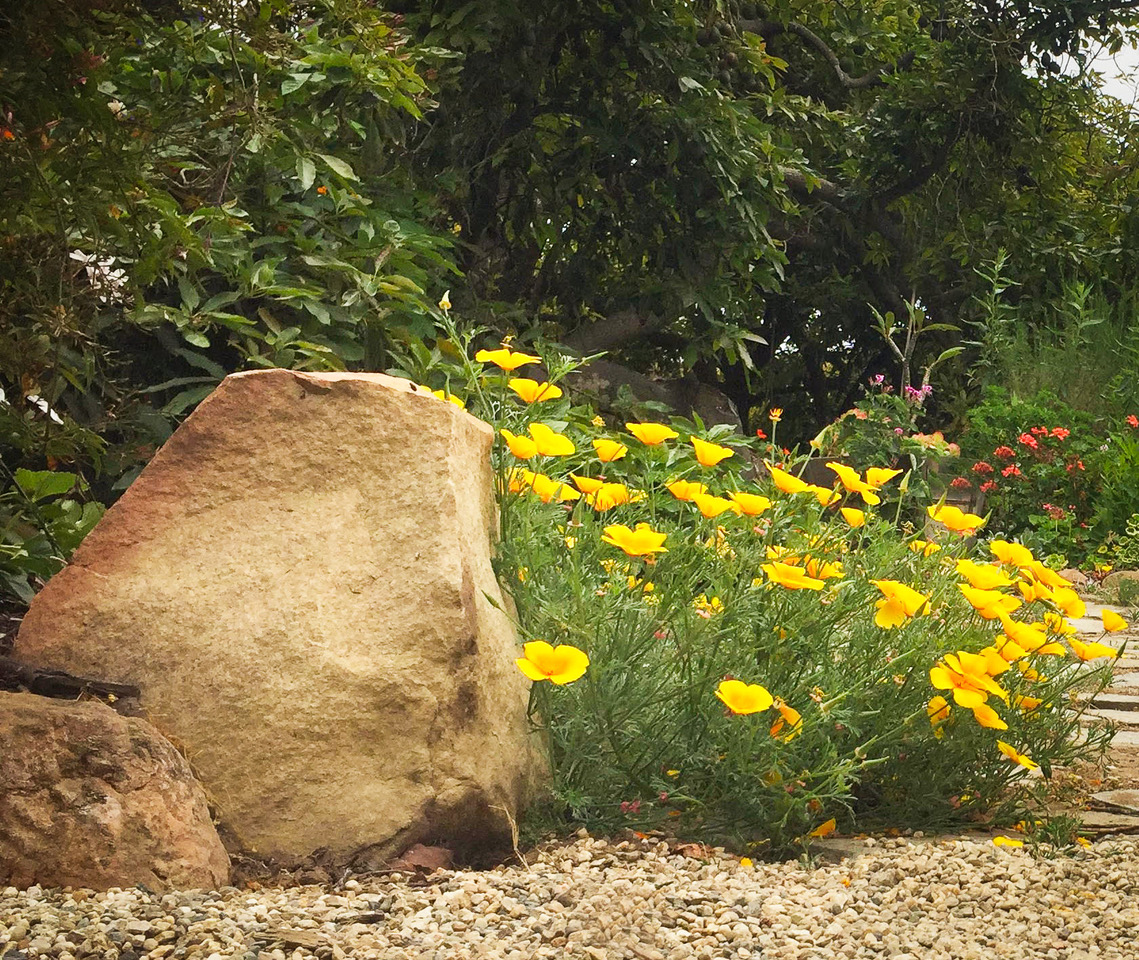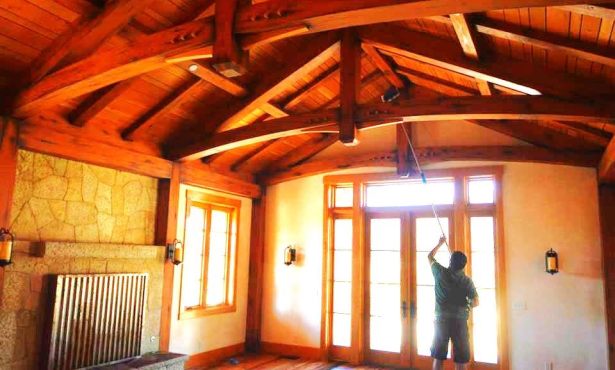Sustainable Landscape Design
Right Plant, Right Place

The concept of sustainability — using resources efficiently and protecting the natural world — is essential to effective landscape design. Creating outdoor spaces that serve human beings and also support a thriving environment involves careful consideration of plants, soil, and hardscaping elements. A healthy landscape is an extension of nature, blending best ecological practices with individualized style.
Simple as it might sound, the saying “right plant, right place” is vital in landscape design. Plants must have the correct “cultural requirements” for their type, e.g., solar exposure, water needs, and soil composition (dry, wet, etc.). A plant’s size at full maturity is another important consideration, as constant pruning puts plants’ health at risk and also comes with a higher carbon footprint. California native plants, as well as edible plants, are great landscape choices because their adaptation to the regions of the state makes them resilient, and they require fewer inputs such as water, fertilizers, and pesticides than other plants typically do. California native plants also provide a habitat for native birds and insects. Edible and productive landscaping includes growing vegetables, herbs, flowers for cutting, and more.
In California, landscaping accounts for fifty percent of domestic water use. Efficiently irrigated properties save a lot of water and still provide beautiful settings. Rainwater can be stored in the soil for months if it is directed from roof gutters to the garden, and when plants with low water needs are used in conjunction with rainwater kept on-site, it is possible to get by without any added irrigation. If irrigation is required, then system efficiency must be maximized. Drip lines and multi-trajectory rotating spray heads reduce runoff and water loss from evaporation, and learning to properly program one’s system allows optimal water run times for changing seasons and weather conditions.
Healthy soil, rich in biodiversity, is the backbone of a landscape. Whether sand, silt, or clay, the greater the biodiversity in one’s soil, the better one’s plants will perform. Pesticides, herbicides, and synthetic fertilizers all reduce the biota in soil, whereas compost, composted manures, and worm castings all increase biodiversity. Mulch helps create and maintain healthy soil. Carbon-based mulches such as wood chips, leaf litter, and straw serve as food to the soil biota and also retain water and reduce weeds. Having biodiverse soil and using mulch is one of the primary ways that carbon is sequestered from the atmosphere. Healthy soil and mulching also works to feed plants and strengthen plants’ natural defense systems, reducing the need for external inputs.
Hardscaping includes paths, patios, walls, retaining walls, and fencing — all the elements built in the landscape that are not plants. When considering flat work such as paths and patios, it is important to think about percolation. Materials like gravel, un-mortared flagstone, and pavers keep precious water out of storm drains and allow it to be absorbed into the soil. It is important to be aware of the ecological implications of the materials one uses in hardscaping. Local materials, as well as repurposed materials, make great options.
Once one understands plants, water, soil, and hardscape, the work of putting it all together to create a practical and aesthetically pleasing landscape begins. Consider the ways the garden will be used and the constraints that may exist on the property. Will the landscape be for children, or for hosting large parties? Is privacy needed? Are there views to be accentuated or downplayed? Finally, one’s landscape style should ideally blend with the architecture of existing structures to create a beautiful space that is beneficial to human, plant, and animal life.



